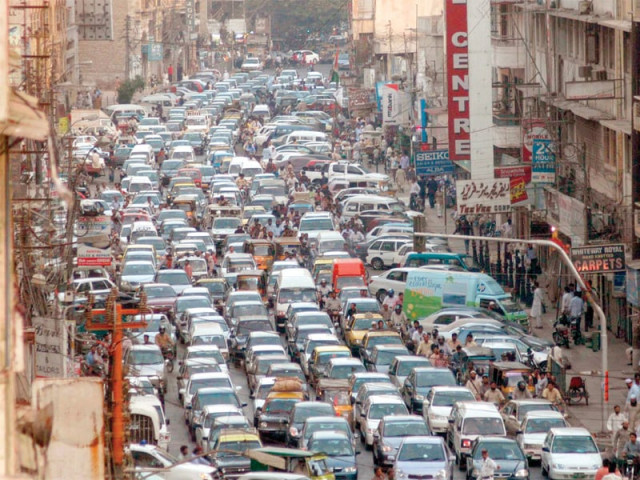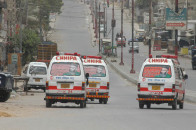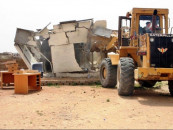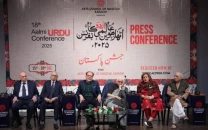Karachi scrapes the bottom of the barrel on two global lists
The Economist Intelligence Unit says Singapore and Melbourne are the two winning cities.

Both lists were prepared by the Economist Intelligence Unit (EIU). Singapore topped the green city index for Asian cities and Melbourne was rated as the most liveable city in terms of stability, healthcare, culture and environment, education and infrastructure. With target killing more stable than Karachi’s local government system, any of its residents would tell you that the EIU got it right.
Karachi came in 135 out of 140 cities on the liveability rating. The scores are then compiled and weighted to provide a score of 1 to 100, where 1 is considered intolerable and 100 is considered ideal.
Algiers, Harare, Lagos, Port Moresby and Dhaka were the only cities that did worse than Karachi.
“Conflict is responsible for many of the lowest scores,” said the report, but went on to acknowledge that, “Global business centres tend to be victims of their own success. The ‘big city buzz’ they enjoy can overstretch infrastructure and cause higher crime rates. New York, London, Paris and Tokyo are all prestigious hubs with a wealth of recreational activity, but all suffer from higher levels of crime.”
Karachi could learn a few things from the system in Vienna where only 18 murders were reported in 2010. The difference is that Vienna is a city of only 1.7 million people and Karachi 18 million. These figures compare with a US average of 4.8 homicides per 100,000 people (2010).
Earlier in the year, the Economist Intelligence Unit’s worldwide cost of living survey placed Karachi as one of the cheapest cities in the world to live in. Small consolation in that, most people would say.
It should be small wonder that Karachi is doing so poorly. Since 2009 its two key political parties have failed to agree on which kind of local government system they want. Indeed, around the time the EIU report was released the two political parties entered a deadlock on whether the new district government system could have control of revenue with the mayor running the police. These two lucrative departments are the lifeblood of Karachi and thus rotten to the core with corruption.
When Karachi’s politicians are not at the negotiating table, their thugs on the street have been engaged in a turf war whose victories are measured by the body count. In the meantime, the city of 18 million people has had no elected mayor for three years. No local government elections are seen on the horizon; in fact the general elections may take place sooner next year.
Not green at all
Karachi was also graded as “well below average” (read bottom of the list) on the Asian Green City Index of 22 cities prepared by the EIU in collaboration with Siemens.
In this region, Singapore was graded as well above average and Mumbai below average. The index covers over 120 global centres and measures 30 key indicators such as CO2 emissions, energy, buildings, land use, transport, water, waste, air quality. Official data is used but the index acknowledges difficulties in gathering data, which is why the EIU made statistical estimates to fill the gaps. More than 20 global experts helped. They included Cambridge University, Harvard University, and UN-Habitat.
Delhi vs Karachi?
While details on Karachi are not provided in the report, the spotlight was shed on Delhi as an example of a “poor” city that has still achieved an overall average rating, higher than Karachi’s. Delhi has one of the lowest per capita GDP levels in the 22 Asian cities at an estimated US$2,000. However, it has done well as it generates the least amount of waste, 147kg per capita, in the index. “This is in part because of what has been called Delhi’s ‘traditional culture of careful consumption’,” said the report. The city has a tendency to re-use and recycle as much as possible. Delhi’s government has, however, capitalized on this and used policy to its advantage in this area.
Official city statistics for Karachi say that each household produces about 2.5kg of waste a day. If we use the Pakistan Bureau of Statistics average, a Karachi household has 6.4 members. This comes to roughly 142kg of waste per capita per year. However, the city district government’s garbage estimates are probably on the lower side.
Another estimate for Karachi is that it generates 9,000 tons of waste a day and only half of it is picked up (on a good day) - 2,000 tons of the 4,500 make it to a landfill site. For a comparison, Singapore is the best in the waste category as it generates only 307kg per person per year. The government has set a target of recycling 63% by 2020 up from 56% in 2008.
Published in The Express Tribune, August 16th, 2012.



















COMMENTS
Comments are moderated and generally will be posted if they are on-topic and not abusive.
For more information, please see our Comments FAQ